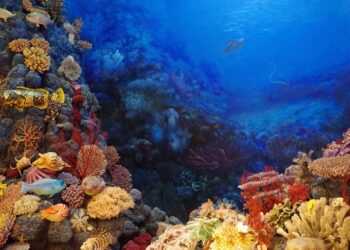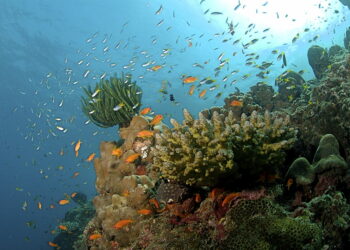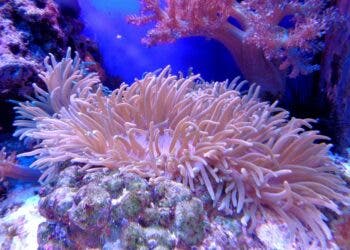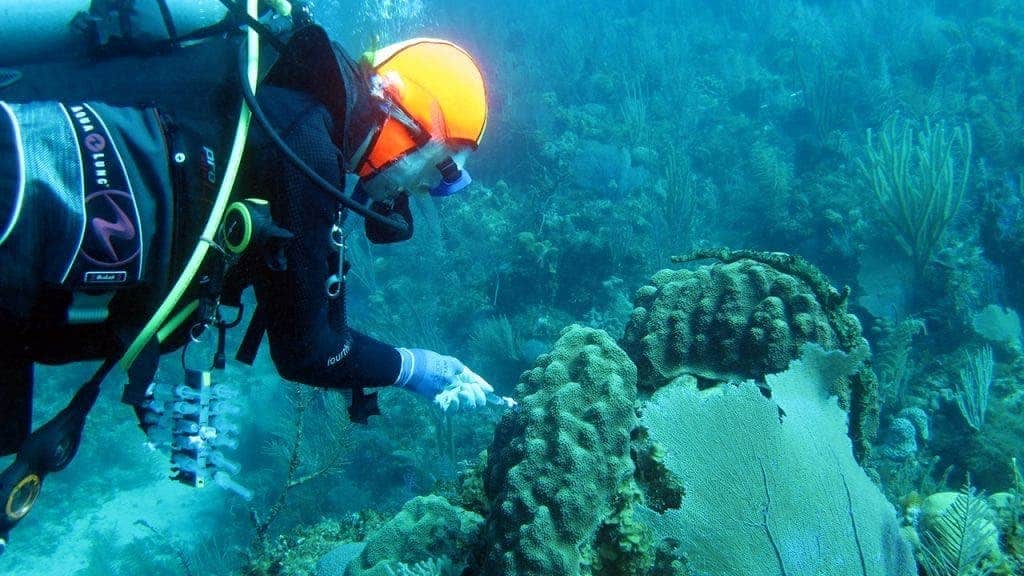
Coral reefs have been called the “rainforests of the sea.” They are some of the most productive and biodiverse ecosystems on Earth. Although they occupy less than one percent of the ocean floor, they are home to more than a quarter of all marine species.
While the algae, which provide the coral with their vibrant color, and the microbial communities, which live within the animals have been extensively studied, the microbes which live just a few centimeters from the surface, have not. However, a new study from scientists at the Woods Hole Oceanographic Institution (WHOI) published in the journal Limnology and Oceanography has begun to describe and catalog these organisms.
“Microbes are everywhere on reefs,” says Laura Weber, lead author of the study and a Ph.D. student in the joint WHOI-MIT program. “There’s roughly a million of them in a single milliliter, which is about 20 drops, of seawater. But we don’t yet have a good sense of the microbial population that exists right next to corals. There’s some evidence from previous studies that corals may be surrounded by unique microbial cells, but many questions are still unanswered. Do these cells differ with coral species or reef site? How might they function?”
Along with her Ph.D. advisor, Amy Apprill, Weber traveled to a protected coral reef system called the “Jardines de la Reina,” located amid a string of remote islands near the southern coast of Cuba. Once there, Weber teamed with local Cuban scientists Patricia Gonzalez-Díaz and Maickel Armenteros to dive on the reefs and collect dozens of small samples from the water near five different species of coral.
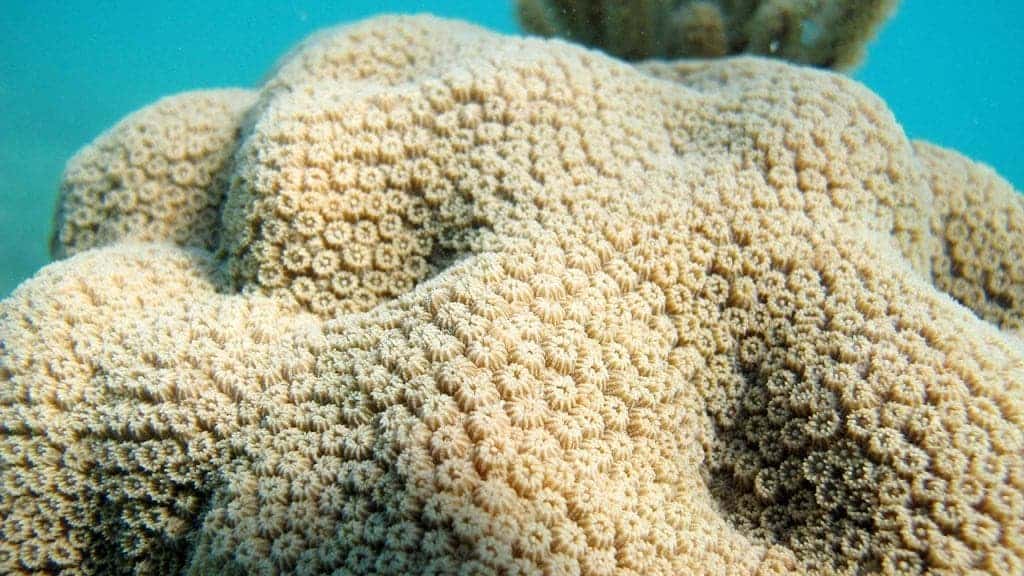
Weber’s team discovered that the microbes contained genes which allowed them to interact with the coral surface. When Weber examined the genetic makeup of the microbes, she found that different types of coral had dissimilar microbial communities which existed near them.
“We started finding cool species-specific trends,” Weber says. “I didn’t think we would see any differences at all–but it turned out that in some areas, the bacterium Endozoicomonas, which lives symbiotically with corals, was actually enriched in the seawater closer to corals compared to the surrounding reef water. That means the region adjacent to corals could be important for attracting symbionts to a coral’s surface, or it could represent a region where corals shed their symbionts.”
Coral are currently in danger of disappearing due to increasing changes to our climate. Earth has lost nearly half of its coral as temperatures continue to rise. And at the current rates, they all could be gone by 2050.
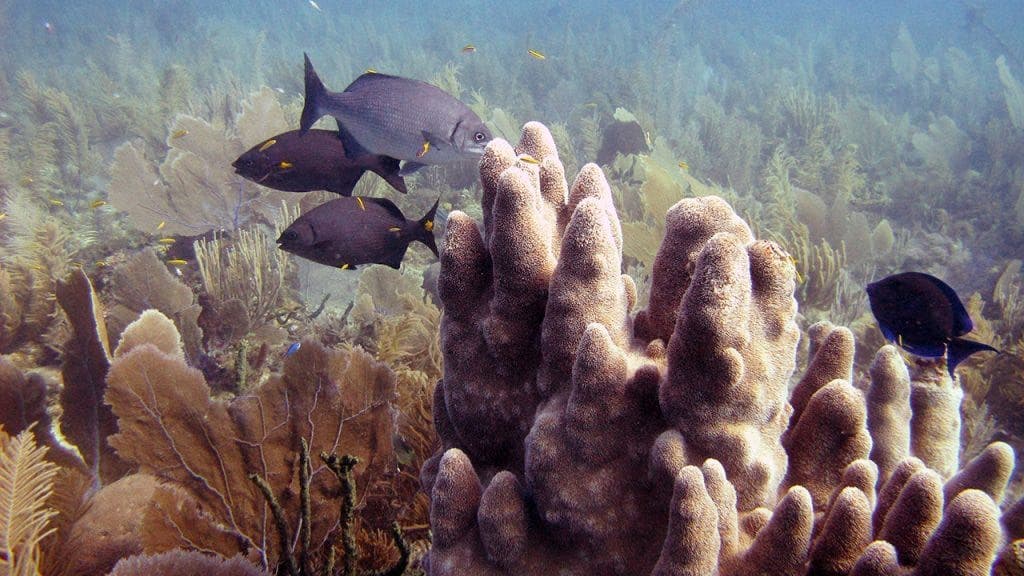
These temperature changes cause mass bleaching of the animal, with mass disease infections becoming more frequent. Carbon dioxide absorbed into the ocean from the atmosphere has already begun to reduce calcification rates in reef-building and reef-associated organisms by altering seawater chemistry through decreases in pH, a process is called ocean acidification. Additionally, rising ocean acidity of the oceans has been making it harder for coral to build their skeletons upward toward sunlight, making them increasingly more vulnerable. How these issues will affect these microorganisms has yet to be seen.
“Scientists have been working for a while now to understand the role of microorganisms in reef environments and within coral colonies,” says Weber. “But now we have evidence that demonstrates a possible relationship between seawater microbes and coral symbionts. That gives us some clues to how they find and infect coral colonies, and how they might impact the health of the corals. It’s very exciting.”

